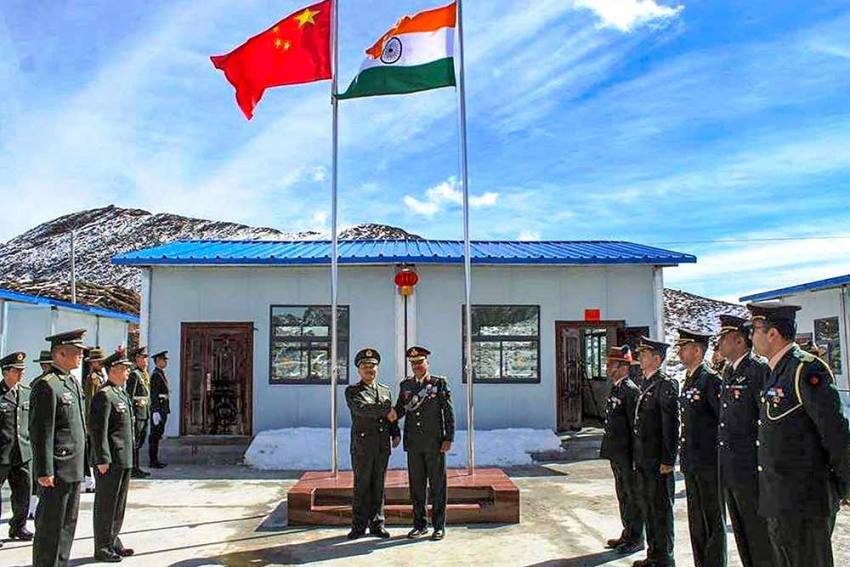NEW DELHI, March 8: India and China are set to hold the 15th round of Corps Commander-level talks on March 11 to try resolve the balance friction areas and ease tensions in eastern Ladakh. The dialogue is expected to focus on resolving outstanding issues at the remaining friction points along the Line of Actual Control (LAC), official sources said on Tuesday.
Sources in the defence establishment said the 15th round of talks will be held at the Indian side of the Chushul-Moldo Border Personnel Meeting point. Lieutenant General Anindya Sengupta, who took over as the commander of XIV Corps responsible for the LAC in Ladakh, will lead the delegation. Lt Gen Sengupta had taken over as the Corps Commander just days ahead of the 14th round of talks, but had been part of discussions since the previous round in October too.
“Both sides will now focus to achieve resolution of balance friction areas. Recent statements by both sides to find a mutually acceptable solution have been encouraging and positive in nature,” the sources said.
The latest round of talks is expected to focus on hammering out an agreement for disengagement of rival frontline soldiers from Hot Springs or Patrol Point-15, one of the friction points on LAC. The last round of the military level talks had taken place in January but it did not result in any breakthrough. However, the two sides said in a joint statement that they would meet again soon. Going into the last round of talks, India was hoping for a resolution of Patrolling Point (PP) 15 but did not succeed. In July last year, the two sides agreed to pull back their troops from PP17A near Gogra Post.
A joint statement issued by Indian and China after the January 12 dialogue talked about a consensus on consolidating previous outcomes and taking steps for security and stability on the ground.
The statement, issued the next day, struck a conciliatory note in contrast to the separate statements issued by the two sides after the 13th round of talks on October 10 in which while the Indian Army said the PLA did not agree to its suggestions, China accused India of “unreasonable and unrealistic demands” in an unusually aggressive statement.
As of now, China has a platoon-sized strength of troops on the Indian side of the Line of Actual Control (LAC) at PP15 at Hot Springs. Chinese troops are blocking Indian soldiers from accessing their traditional patrolling limits at PP10, PP11, PP11A, PP12 and PP13 in Depsang Plains, which is close to India’s strategic Daulat Beg Oldie base in the north. Also, some so-called Chinese civilians have pitched tents on the Indian side of the LAC in Demchok, and have refused to vacate.
It is good that both sides are continuing to discuss the disengagement process, said former Northern Army commander Lieutenant General DS Hooda (retired).
“Given what has happened in the last two rounds, it is difficult to predict any outcome. But, if there is any lesson from the ongoing Ukraine conflict, it is that festering tensions should not be left unaddressed. China should realise this,” he added.
A recent statement by China’s Foreign Minister and State Councillor Wang Yi has been viewed positively by sections of the Indian security establishment and rekindled hopes of China adopting a softer attitude towards resolving the border tension between the two countries. At a press conference in Beijing on March 7, Wang said the relations between the two countries “have encountered some setbacks in recent years, which do not serve the fundamental interests of the two countries and the two peoples.”
“As we have seen, some forces have always sought to stoke tension between China and India and division between regions. Their attempts have put more and more thoughtful people in reflection and on alert. More people have come to realise that for China and India, both major countries with a population of over a billion, only by staying independent can we firmly grasp our own destiny and realise our goals of development and rejuvenation.”
He said about the “boundary question left over from history,” China has “all along advocated managing differences through equal-footed consultation, actively seeking a fair and equitable settlement, and meanwhile not letting it affect or interfere with the bigger picture of bilateral cooperation.”
“We hope,” Wang said, “that India will work with China to uphold the strategic consensus that our two countries pose no threat but offer development opportunities to each other” and “continue to build mutual trust, avoid misunderstanding and miscalculation so that we will be partners for mutual success instead of adversaries of mutual attrition.” The two countries must “make sure that our relationship moves forward on the right track, bring more benefits to our peoples and make a greater contribution to the region and the world,” he said.
Earlier, both sides disengaged from the north and south banks of Pangong Tso including the Kailash range heights in the Chushul sub-sector, and from PP14 in Galwan Valley, which had seen violent clashes in June 2020, resulting in the death of 20 Indian soldiers and at least four Chinese soldiers. India and China have over have 50,000 to 60,000 troops each along with advanced weaponry deployed in the depth areas in the region along with additional air defence assets, tanks, artillery and other weapons. The standoff will complete two years in May.
(Manas Dasgupta)

